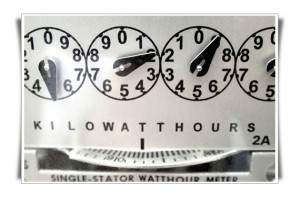A battle is heating up in California regarding the State’s net metering policy as the California Public Utilities Commission is reviewing the policy’s costs and benefits. Net metering is an incentive that allows consumers who produce their own electricity, from rooftop solar panels for example, to sell excess bac k to the grid (often) at full retail price.
k to the grid (often) at full retail price.
Opponents of net metering contend that the volumetric retail rate includes fixed costs that are essential to the long-term stability of our utility infrastructure. They claim that net metering customers get the benefit of using the grid, but pay less to do so than other customers. Supporters such as the Solar Energy Industries Association have responded that encouraging distributed generation through net metering results in decreased peak loading, decreased needs in transmission infrastructure and benefits to consumers in the form of increased market competition.
Currently 43 states and the District of Columbia have net metering policies in place. The regulatory landscape began to take shape in 2005 with the Federal Energy Regulatory Commission’s issue of Order 2006, effectively setting standards for connecting small distributed generation projects to the grid. A variety of tax incentives, subsidies and market forces have resulted in significant growth in renewables, which has led some to conclude that distributed generation requires attention from policymakers to avoid unintended consequences.
Is net metering a problem for the long-term stability of Utilities? Are there alternative policy mechanisms to net metering?
Policy driven market distortions are the norm for energy in the U.S. If the policy is to significantly increase distributed generation, then net metering is one way of incentivizing that… Read more »
A study done by Tom Beach of Crossborder Energy, who used actual data from 10,000 solar systems and analytic models from the CPUC found that when California reaches its current… Read more »
Our view is that there is no inherent conflict between the long-run investor-owned utility business model and increasing amounts of distributed, grid-interconnected PV. Net metering polices can and should be… Read more »
[…] for customers to produce their own energy and sell excess energy back to the grid, known as Net Energy Metering (NEM) in place in over 40 states, the traditional… Read more »